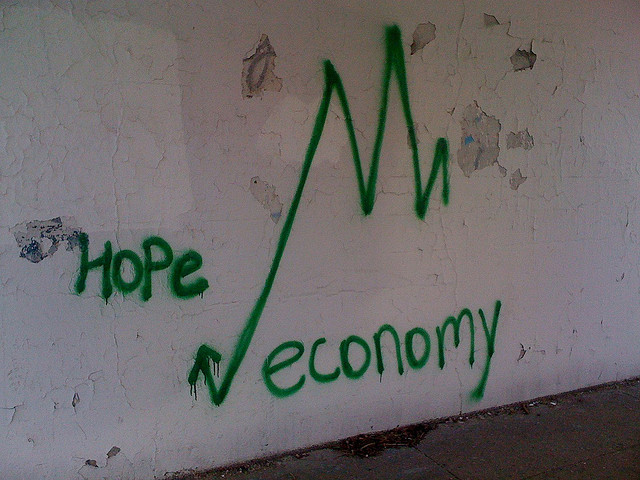Ever since the global meltdown of 2008, it’s been an article of faith in Canadian economics that we somehow handled the whole mess better than the rest of the world. No banks collapsed. Our recession, while painful, was not nearly as bad as America’s. Our deficits were smaller, and will disappear sooner. Not surprisingly, there’s a strong political aspect to that smug mindset: Federal Conservatives never tire of claiming credit for this supposedly superior performance.
The argument that Canada outperformed the rest of the world was overstated at the best of times. Even in the early years of recovery, several other countries (including Germany, South Korea, Australia) did much better at protecting employment and rebuilding incomes. But with the rest of the world now gaining serious economic momentum, Canada’s boastful claims are increasingly far-fetched. Far from leading, we now lag other countries, and our relative underperformance is getting worse.
This month’s dismal jobs report is just the latest evidence confirming Canada’s fall from economic grace. In July, 18,000 full-time jobs disappeared (offset by 60,000 new part-time jobs). The official unemployment rate fell by a notch (to 7 per cent). Labour force participation is stuck at its lowest point since 2001. Measured as a share of the working-age population, employment in Canada is hardly better than in the summer of 2009 – the worst point of the recession.
In short, the Canadian labour market is mired in a recession-like funk, five full years after the recovery officially began. Growth and job-creation can’t even keep up with population, let alone repair lingering damage from the downturn. The partial progress made during the initial, stimulus-fired years of recovery ground to a halt in 2011. That’s when government — led by Ottawa — took its foot off the gas, and put it firmly on the fiscal brake.
There’s no more potent symbol of our flagging relative standing than the night-and-day contrast between Canada and the U.S. Our neighbours to the south are finally regaining some economic mojo. The U.S. economy created 2.3 million full-time jobs in the last year, while in Canada full-time employment has hardly changed. U.S. GDP grew at a brisk 4 per cent in the second quarter, twice Canada’s likely pace (and the U.S. number is likely to be revised upward thanks to strong trade numbers). Since the beginning of 2013, the U.S. unemployment rate has fallen by 1.7 percentage points. Canada’s hasn’t fallen at all.
There are many causal factors behind this tale of two recoveries. One of them, clearly, is a stark difference in policy stance. U.S. policy-makers have put job-creation at the top of their agenda — and they’ve used unconventional tools to achieve it. They are tolerating much larger budget deficits, for much longer, and with near-zero interest rates that’s not a problem. Quantitative easing pumps additional purchasing power directly into the economy. A deliberately weak U.S. dollar and other America-first measures have successfully boosted net exports. To be sure, political gridlock in Washington and other dysfunctional aspects of U.S. policy continue to cast shadows over future progress. But the U.S. economy is clearly bouncing back, and at an accelerating pace.
In Canada, in contrast, pious orthodoxy still trumps the need for job-creation. Fiscal policy at the federal level, and most provinces, is obsessed with eliminating deficits as quickly as possible. The Bank of Canada has also stuck to the standard playbook: eschewing quantitative easing, tolerating the painful impact of an overvalued currency, and mostly telling Canadians to “be patient.” Ottawa continues to proclaim a boom in natural resource exports as the saviour for all that ails our economy, despite accumulating evidence about the economic and environmental limits to that strategy.
Don’t expect Conservative leaders to dial down their self-congratulatory rhetoric. In particular, they will praise to the heavens the imminent balancing of the federal books (likely to be achieved next year, ahead of schedule). But that will be a hollow victory, indeed, if Canadian labour market indicators continue to languish — while Americans head back to work in droves. And the cognitive dissonance between claims of Canadian economic superiority, and the gritty reality of stagnation and underemployment, will be increasingly apparent to voters as next year’s federal election approaches.
Jim Stanford is an economist with Unifor. This column was first published in the Globe and Mail.
Photo: Simon King/flickr
Editor’s note: Last week, Statistics Canada released a report contaning a significant error, upon which the original version of this column was based. The column has been edited to reflect the corrected report. You can read more from Jim Stanford on the corrections at progressive-economics.ca.



